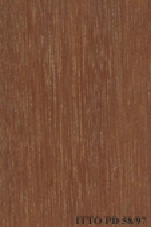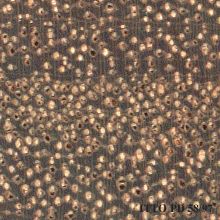
MORA (Mora gonggrijpii)
Nombre comercial
Mora
Nombre científico (con autor)
Mora gonggrijpii (Kleinhoonte) Sandwith
Familia
LEGUMINOSAE
Nombres Comunes
Pracuuba-Vermelha (Brazil); Pracuuba-Da-Várzea (Brazil); Pracuuba-Amarela (Brazil); Pracuuba (Brazil); Praculiba-Branca (Brazil); Moraboekea; Mora bukea; Visgueiro (Brazil); Tamarindo; Royo; Pracuuba (Brazil); Nato Rojo (Colombia); Nato; Mora De Guayana; Mora (Venezuela); Mahot Rouge; Kouatakama; Goma Pashaca; Faveira (Brazil); Morera; Morabukea (Guyana)
Nombres científicos sinónimos (con autores)
Dimorphandra gonggrijpii Kleinhoonte
DESCRIPCIÓN DEL ÁRBOL
Descripción botánica
The trees are reported to reach heights of 30 to 37 m, with trunk diameters ranging from 60 to 90 cm. They develop well-formed and cylindrical boles that are up to 18 m long, with well developed buttresses, sometimes 4.5 m tall.
Hábitat natural
This gregarious species is reported to be dominant, developing on the lowlands. It is usually found in homogeneous stands called "morales" on swampy areas and gallery forests. It has an abundant natural regeneration.
IDENTIFICACIÓN DE LA MADERA
Descripción anatómica de la madera
Wood diffuse porous. Vessels solitary and in short radial multiples. Tangential diameter of vessel lumina 150 to 200 micras (medium). Occasionally white deposits in heartwood vessels. Vessels per mm2 5 to 20. Simple perforation plates. Vessel-ray pits similar t Occasionally axial parenchyma in marginal or in seemingly marginal bands. Axial parenchyma lozenge-aliform. Axial parenchyma confluent. Prismatic crystals in chambered axial parenchyma cells and/or in fibers. 3 to 4 cells per parenchyma strand. 4 to 10 rays per mm (medium). Rays 1 to 4 seriate. Homogeneous rays and/or sub-homogeneous rays (all ray cells procumbent). Fibers with simple to minutely bordered pits.
-
 Foto macroscópica de la madera, plano tangencial
Foto macroscópica de la madera, plano tangencial
-
 Foto microscópica sección transversal de la madera
Foto microscópica sección transversal de la madera
Disponibilidad
Status de protección por CITES
Unrestricted
DESCRIPCIÓN GENERAL DE LA MADERA
Olor
Odor and taste are indistinct.
Color
The pink sapwood is differentiated from the heartwood which is yellowish-red brown or reddish brown, sometimes with dark red fine veins.
Indice de Color (1= Negro, violeta; 7= Amarillo claro, blanco)
4
Grano
The grain is variable, straight to interlocked.
Veta
The texture is moderately fine to medium.
Brillo
The wood has medium luster.
Durabilidad Natural
Its resistance to decay is variable. It is very resistant to attack by dry-wood termites, and resistant to dry wood insects.
Indice de Durabilidad Natural (1=Muy alta, 7=Muy baja)
2
Dificultad para impregnar
The wood is reported to be resistant to preservative treatment.
PROPIEDADES FÍSICAS DE LA MADERA
Densidad Básica (Peso anhidro/Vol. saturado) (g/cm³)
0.85
Densidad seca al aire (Peso y volúmen CH12%) (g/cm³)
0.98
Contracción Tangencial Total (Saturado hasta anhidro) (%)
10.5
Contracción Radial Total (Saturado hasta anhidro) (%)
7.5
Defectos por secado
Ease of Drying: It is moderately difficult to air season. Drying Defects: When dried rapidly checking and warping are reported.
Calendario de Secado
UK-B; US-T2-C2; JUNAC-A
Estabilidad Dimensional (Contracción Total Tangencial %/Contracción Total Radial %)
1.4
PROPIEDADES QUÍMICAS DE LA MADERA
PROPIEDADES MECÁNICAS DE LA MADERA
Resistencia a flexión (Módulo de ruptura) CH12% (kgf/cm²)
1878
Rigidez (Módulo de elasticidad) CH12% (kgf/cm²)
229500
Resistencia a la compresión paralela a la fibra CH12% (kgf/cm²)
995
Cizallamiento radial CH12% (kgf/cm²)
187
Dureza Janka (lados) CH12% (kgf)
1366
Dureza Janka (extremos) CH12% (kgf)
1497
TRABAJABILIDAD
Aserrado
The timber is reported to saw with moderate difficulty but it yields smooth surfaces. There may be considerable pick-up and chipped grain if the material contains interlocked grain.
Corte de chapa rotativa
It is not suitable for plywood because of its high density.
Chapa tranchada
It is not suitable for plywood because of its high density.
Pérdida de filo_romado
It exerts a moderate blunting effect on the cutting elements.
Cepillado
The timber is reported to plane with moderate difficulty because of interlocked grain. A reduced cutting angle of 20 degrees is recommended.
Torneado
30
Clavado
Good nail-holding, pre-boring is necessary.
Encolado
The behavior in gluing is fair.
Lijado
The material is reported to sand with moderate difficulty.
Acabado
This wood yields a smooth surface in finishing.
Doblar al vapor
Bending properties are reportedly moderate.
Usos Reportados
USOS FINALES (RESUMEN)
EXTERIOR GENERAL, crossties, HOUSING GENERAL, beams, joists, boards, flooring, parquet, frames, steps, FURNITURE AND CABINETS, cabinets, TURNING, CONTAINERS, truck bodies, OTHER AND MUSICAL INSTRUMENTS, handicrafts
EXTERIOR GENERAL
- 1 - Tabela de resultados de ensaios fisicos e mecanicos
Durmientes
- 8 - Maderas latinoamericas. III, Podocarpus standleyi ,Podocarpus oleifolius, Drims granadensis, Magnolia poasana y Didymopanax pittieri
VIVIENDA GENERAL
- 10 - Silica in Timbers
vigas
- 11 - Prospect: The wood database
Viguetas
- 12 - Tropical timbers of the world. Part I-Tropical American Species
Tablas
- 13 - Dry kiln schedules for commercial woods. Temperate and tropical. Section III. Latin American (Mexico, Central, and South America) Woods–Conventional Temperatures
Pisos
- 14 - Handbook of Hardwoods
Parquet
- 15 - Empire Timbers
Marcos
- 16 - Woods of the World
Peldaños
- 17 - Tree Conservation Database
MUEBLES Y GABINETES
- 21 - Tropical timbers of the world. Part III-Southeast Asian and Oceanian Species.
Gabinetes
- 24 - Empire Timbers
Torneado
- 30 - Embassy of Honduras in Japan
Carrocería de camión
- 53 - Timbers of the New World
artesanía
- 66 - Maderas latinoamericanas. VII. Caracteristicas anatomicas. propiedades fisicomecanicas, de secado, y tratabilidad de la madera juvenil de Cordia alliodora (Ruiz & Pav. Oken.)
Please Provide Information To View Producer Information